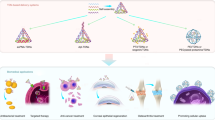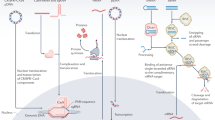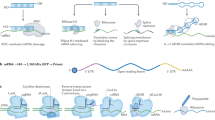Abstract
Finding an appropriate carrier for antisense oligonucleotides (AS-ODNs) and improving the efficiency of their delivery to cells and organs has been critical for the translation of antisense therapy into practice for more than 30 years. We have used a β-glucan, schizophyllan (SPG), as a delivery tool to solve this issue. SPG forms a complex with AS-ODNs that can be taken up by cells expressing the β-glucan receptor Dectin-1. We used SPG/AS-DNA complexes containing four to ten ODNs with a relatively large distribution of molecular weights. We recently discovered a complex in which the number of AS-ODNs can be accurately controlled and denoted it as a quantized complex. Building on our previous work, this paper presents the biological properties of this new quantized complex, including its efficacy for cells expressing Dectin-1 and the mechanism behind its cellular uptake of gene-silenced AS-ODNs and immunostimulatory CpG-ODNs. We found that this new complex is also recognized by Dectin-1, and interestingly, is more effective than the conventional complexes, owing to its easier escape from the endocytotic pathway.
This is a preview of subscription content, access via your institution
Access options
Subscribe to this journal
Receive 12 print issues and online access
$259.00 per year
only $21.58 per issue
Buy this article
- Purchase on Springer Link
- Instant access to full article PDF
Prices may be subject to local taxes which are calculated during checkout








Similar content being viewed by others
References
Hagedorn PH, Hansen BR, Koch T, Lindow M. Managing the sequence-specificity of antisense oligonucleotides in drug discovery. Nucleic Acids Res. 2017;45:2262–82.
Khar RK, Jain GK, Warsi MH, Mallick N, Akhter S, Pathan SA, et al. Nano-vectors for the ocular delivery of nucleic acid-based therapeutics. Indian J Pharm Sci. 2010;72:675–88.
Zamecnik PC, Stephenson ML. Inhibition of Rous sarcoma virus replication and cell transformation by a specific oligodeoxynucleotide. Proc Natl Acad Sci USA. 1978;75:280–4.
Zhu L, Mahato RI. Lipid and polymeric carrier-mediated nucleic acid delivery. Expert Opin Drug Deliv. 2010;7:1209–26.
Kim Y-T, Kim E-H, Cheong C, Williams DL, Kim C-W, Lim S-T. Structural characterization of β-d-(1→3, 1→6)-linked glucans using NMR spectroscopy. Carbohydr Res. 2000;328:331–41.
McIntire T, Brant D. Observations of the (R’3)-²-d-glucan linear triple helix to macrocycle interconversion using noncontact atomic force microscopy. J Am Chem Soc. 1998;120:6909–19.
Sakurai K, Shinkai S. Molecular recognition of adenine, cytosine, and uracil in a single-stranded RNA by a natural polysaccharide: schizophyllan. J Am Chem Soc. 2000;122:4520–1.
Mizu M, Koumoto K, Anada T, Karinaga R, Kimura T, Nagasaki T, et al. Enhancement of the antisense effect of polysaccharide–polynucleotide complexes by preventing the antisense oligonucleotide from binding to proteins in the culture medium. Bull Chem Soc Jpn. 2004;77:1101–10.
Heyl KA, Klassert TE, Heinrich A, Müller MM, Klaile E, Dienemann H, et al. Dectin-1 is expressed in human lung and mediates the proinflammatory immune response to nontypeable haemophilus influenzae. mBio. 2014;5:e01492–14.
Mochizuki S, Sakurai K. Dectin-1 targeting delivery of TNF-α antisense ODNs complexed with β-1,3-glucan protects mice from LPS-induced hepatitis. J Control Release. 2011;151:155–61.
Brown GD, Gordon S. A new receptor for β-glucans. Nature. 2001;413:36–7.
Izumi H, Nagao S, Mochizuki S, Fujiwara N, Sakurai K, Morimoto Y. Optimal sequence of antisense DNA to silence YB-1 in lung cancer by use of a novel polysaccharide drug delivery system. Int J Oncol. 2016;48:2472–8.
Fujiwara N, Izumi H, Morimoto Y, Sakurai K, Mochizuki S. Complex consisting of antisense DNA and β-glucan promotes internalization into cell through Dectin-1 and hybridizes with target mRNA in cytosol. Cancer Gene Ther. 2019;26:32–40.
Sasaki S, Izumi H, Morimoto Y, Sakurai K, Mochizuki S. Induction of potent cell growth inhibition by schizophyllan/K-ras antisense complex in combination with gemcitabine. Bioorg Med Chem. 2020;28:115668.
Shimada N, Coban C, Takeda Y, Mizu M, Minari J, Anada T, et al. A polysaccharide carrier to effectively deliver native phosphodiester CpG DNA to antigen-presenting cells. Bioconjugate Chem. 2007;18:1280–6.
Shimada N, Ishii KJ, Takeda Y, Coban C, Torii Y, Shinkai S, et al. Synthesis and in vitro characterization of antigen-conjugated polysaccharide as a CpG DNA carrier. Bioconjugate Chem. 2006;17:1136–40.
Kobiyama K, Aoshi T, Narita H, Kuroda E, Hayashi M, Tetsutani K, et al. Nonagonistic Dectin-1 ligand transforms CpG into a multitask nanoparticulate TLR9 agonist. Proc Natl Acad Sci USA. 2014;111:3086–91.
Mochizuki S, Morishita H, Sakurai K. Macrophage specific delivery of TNF-α siRNA complexed with β-1,3-glucan inhibits LPS-induced cytokine production in a murine acute hepatitis model. Bioorg Med Chem. 2013;21:2535–42.
Miyamoto N, Mochizuki S, Fujii S, Yoshida K, Sakurai K. Adjuvant activity enhanced by cross-linked CpG-oligonucleotides in β-glucan nanogel and its antitumor effect. Bioconjug Chem. 2017;28:565–73.
Sakisaka H, Takedatsu H, Mitsuyama K, Mochizuki S, Sakurai K, Sakisaka S, et al. Topical therapy with antisense tumor necrosis factor alpha using novel β-glucan-based drug delivery system ameliorates intestinal inflammation. Int J Mol Sci. 2020;21:683.
Zhang Q, Ichimaru N, Higuchi S, Cai S, Hou J, Fujino M, et al. Permanent acceptance of mouse cardiac allografts with CD40 siRNA to induce regulatory myeloid cells by use of a novel polysaccharide siRNA delivery system. Gene Ther. 2015;22:217–26.
Sumiya K, Matsunaga T, Tanaka M, Mochizuki S, Sakurai K. Oligo-DNA stoichiometrically binds β-1,3-glucan with the best fit length. Biomacromolecules. 2020;21:4823–34.
Sumiya K, Izumi H, Mochizuki S, Sakurai K. Enhanced in-vitro efficacy of antisense delivery by use of low-molecular weight polysaccharide/DNA complex. Chem Lett. 2021;50:1191–3.
Sanada Y, Matsuzaki T, Mochizuki S, Okobira T, Uezu K, Sakurai K. β-1,3-D-glucan schizophyllan/poly(dA) triple-helical complex in dilute solution. J Phys Chem B. 2012;116:87–94.
Basaki Y, Taguchi K-i, Izumi H, Murakami Y, Kubo T, Hosoi F, et al. Y-box binding protein-1 (YB-1) promotes cell cycle progression through CDC6-dependent pathway in human cancer cells. Eur J Cancer. 2010;46:954–65.
Kohno K, Izumi H, Uchiumi T, Ashizuka M, Kuwano M. The pleiotropic functions of the Y-box-binding protein, YB-1. Bioessays. 2003;25:691–8.
Kuwano M, Oda Y, Izumi H, Yang SJ, Uchiumi T, Iwamoto Y, et al. The role of nuclear Y-box binding protein 1 as a global marker in drug resistance. Mol Cancer Ther. 2004;3:1485–92.
Vollmer J, Krieg AM. Immunotherapeutic applications of CpG oligodeoxynucleotide TLR9 agonists. Adv Drug Deliv Rev. 2009;61:195–204.
Krug A, Rothenfusser S, Hornung V, Jahrsdörfer B, Blackwell S, Ballas ZK, et al. Identification of CpG oligonucleotide sequences with high induction of IFN-alpha/beta in plasmacytoid dendritic cells. Eur J Immunol. 2001;31:2154–63.
Verthelyi D, Ishii KJ, Gursel M, Takeshita F, Klinman DM. Human peripheral blood cells differentially recognize and respond to two distinct CPG motifs. J Immunol. 2001;166:2372–7.
Kawai T, Akira S. The role of pattern-recognition receptors in innate immunity: update on Toll-like receptors. Nat Immunol. 2010;11:373–84.
Hartmann G, Krieg AM. Mechanism and function of a newly identified CpG DNA motif in human primary B cells. J Immunol. 2000;164:944–53.
Stenmark H, Aasland R, Toh BH, D’Arrigo A. Endosomal localization of the autoantigen EEA1 is mediated by a zinc-binding FYVE finger. J Biol Chem. 1996;271:24048–54.
Ashwell G, Harford J. Carbohydrate-specific receptors of the liver. Annu Rev Biochem. 1982;51:531–54.
Raja RH, McGary CT, Weigel PH. Affinity and distribution of surface and intracellular hyaluronic acid receptors in isolated rat liver endothelial cells. J Biol Chem. 1988;263:16661–8.
Acknowledgements
We gratefully thank Mr. Shogo Sasaki for technical assistance. This work was financially supported by JST CREST and by JSPS KAKENHI: Grant-in-Aid for Scientific Research A (20H00668) and Grant-in-Aid for Challenging Exploratory Research (20K20449).
Author information
Authors and Affiliations
Corresponding authors
Ethics declarations
Conflict of interest
The authors declare no competing interests.
Additional information
Publisher’s note Springer Nature remains neutral with regard to jurisdictional claims in published maps and institutional affiliations.
Supplementary information
Rights and permissions
About this article
Cite this article
Sumiya, K., Izumi, H., Matsunaga, T. et al. Delivery of therapeutic oligonucleotides targeting Dectin-1 using quantized complexes. Polym J 54, 591–601 (2022). https://doi.org/10.1038/s41428-021-00595-8
Received:
Revised:
Accepted:
Published:
Issue Date:
DOI: https://doi.org/10.1038/s41428-021-00595-8
This article is cited by
-
Antisense DNA cocktail therapy using short ß-1,3-glucan/oligonucleotide complexes
Polymer Journal (2023)
-
Special issue: Fundamentals and applications of carbohydrate polymers
Polymer Journal (2022)



